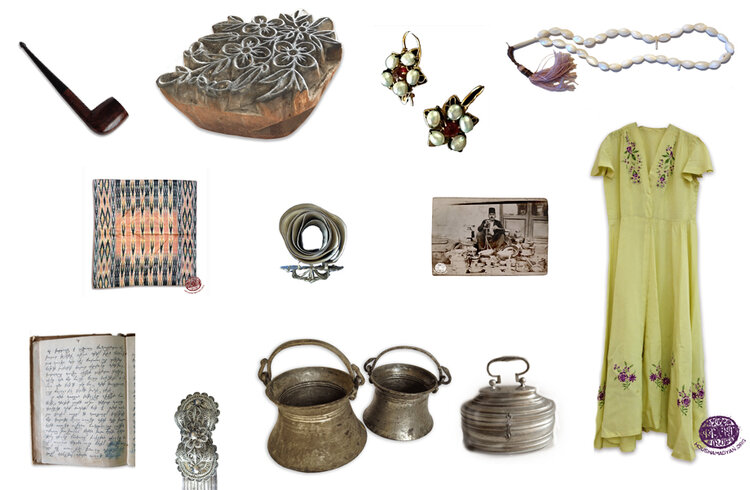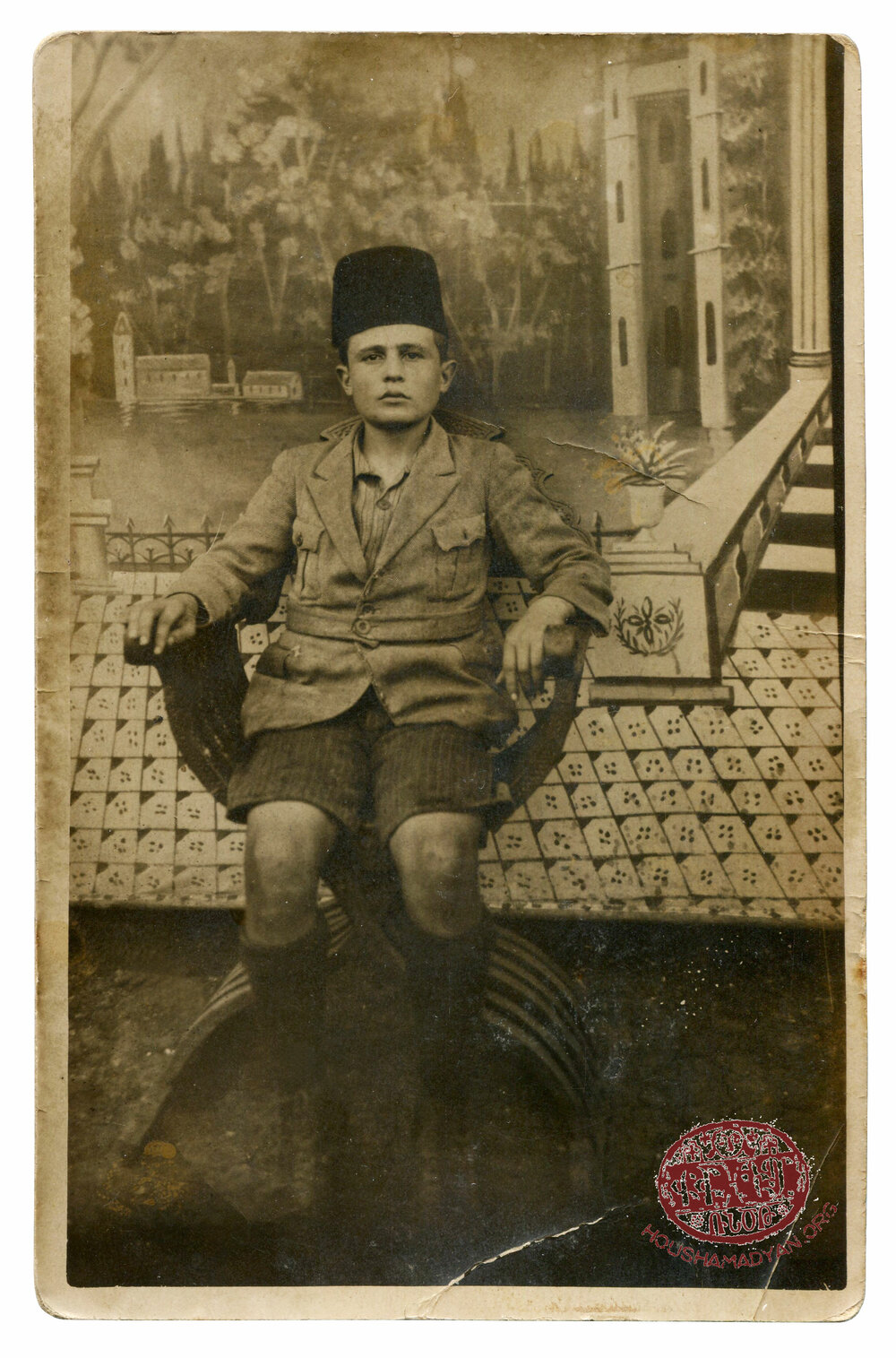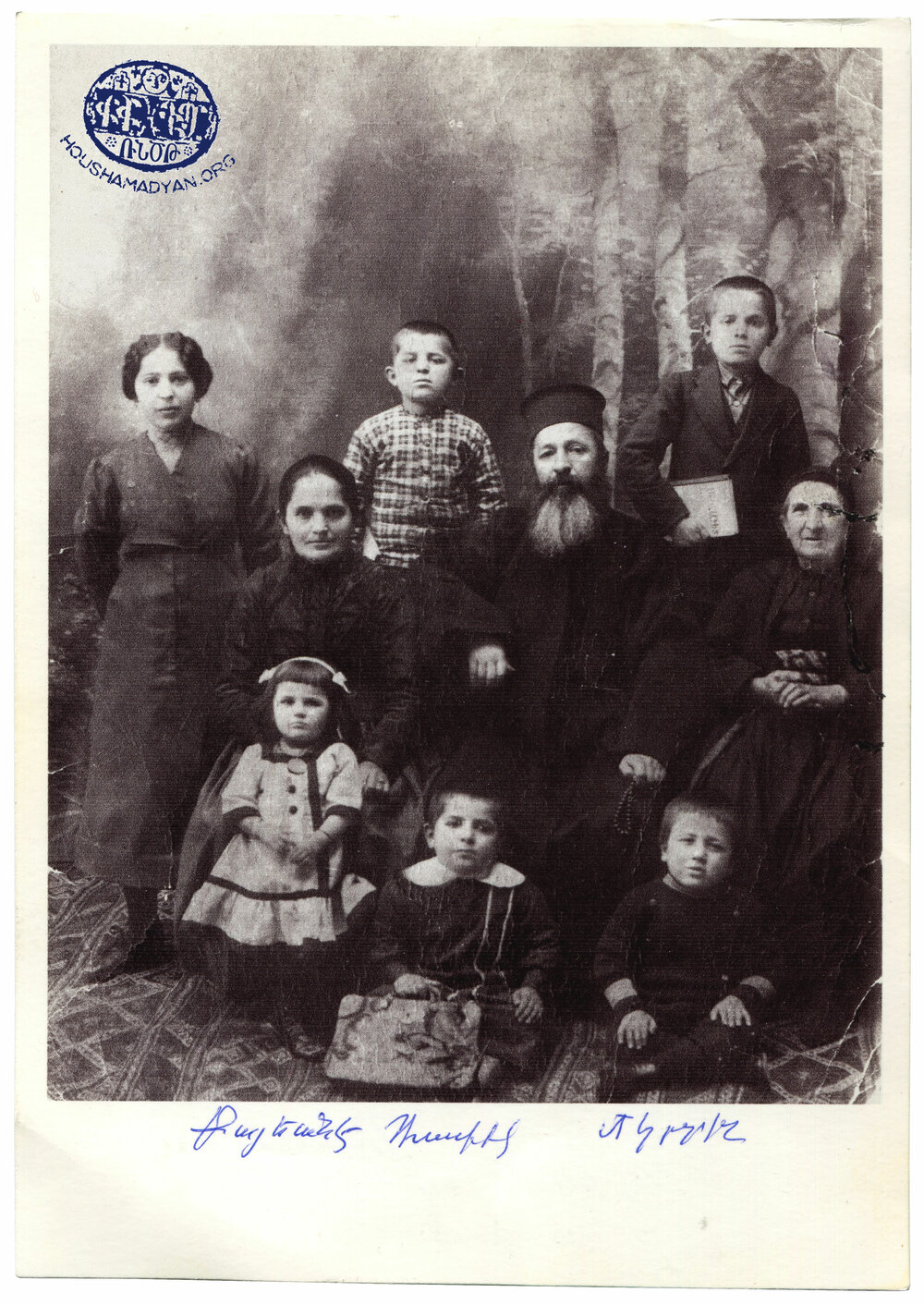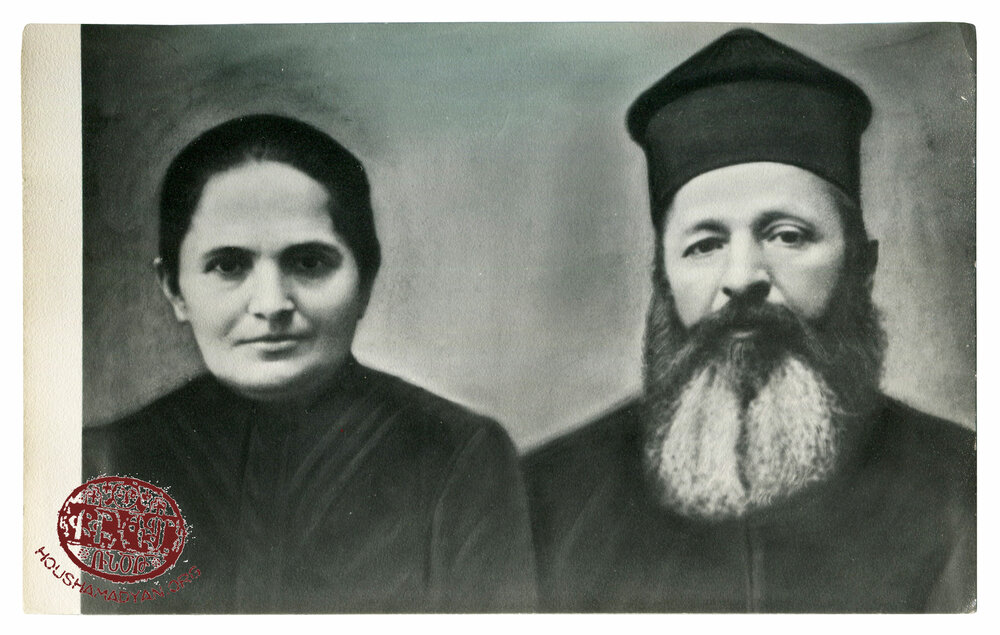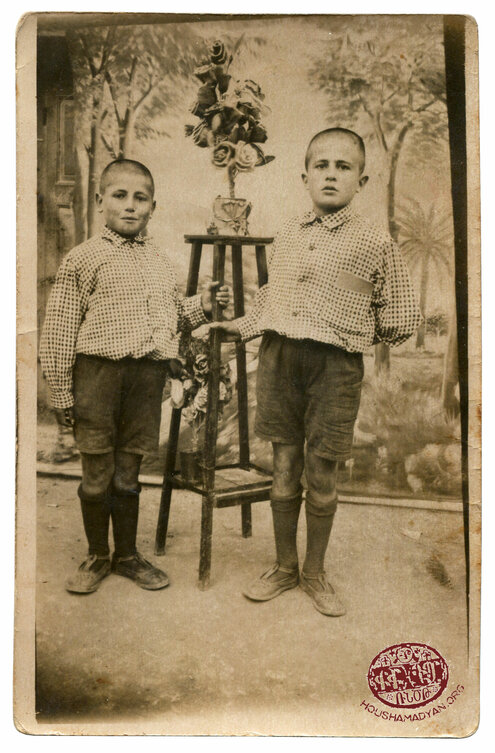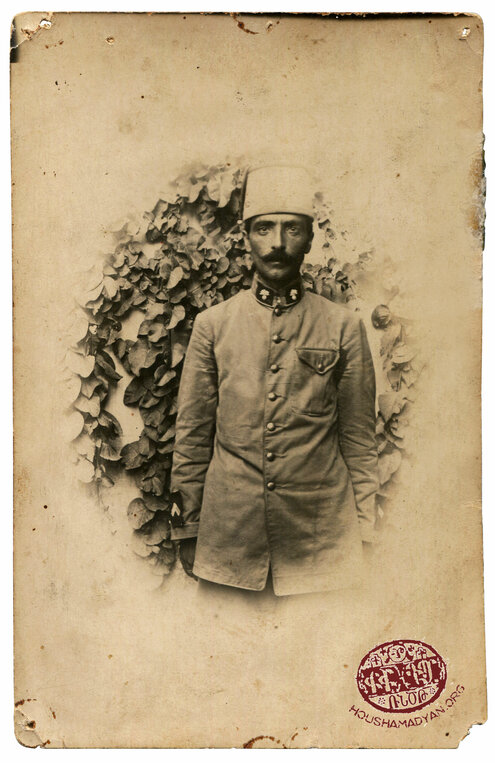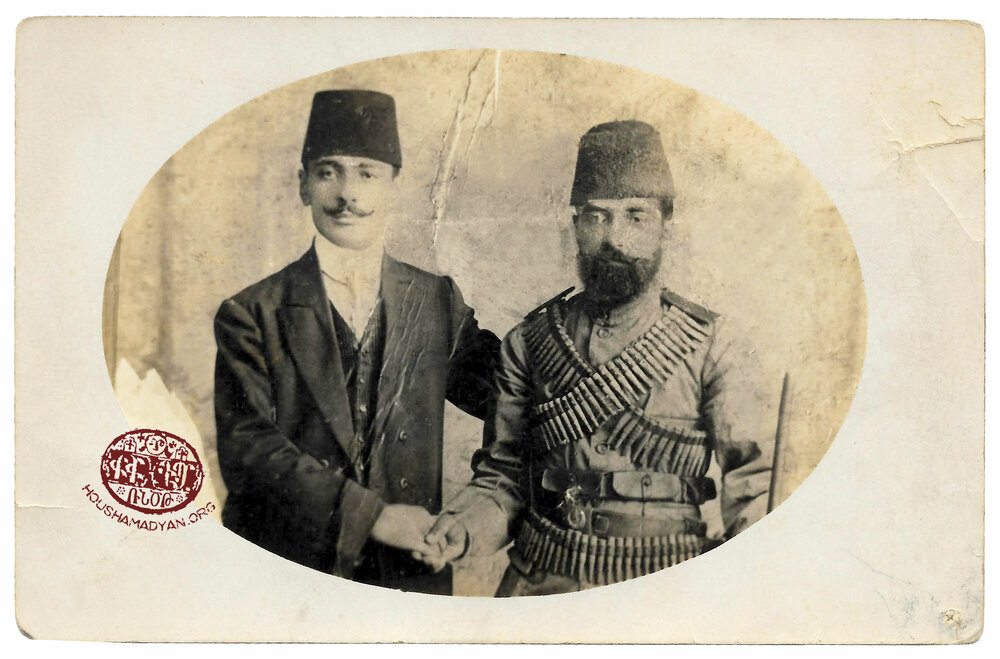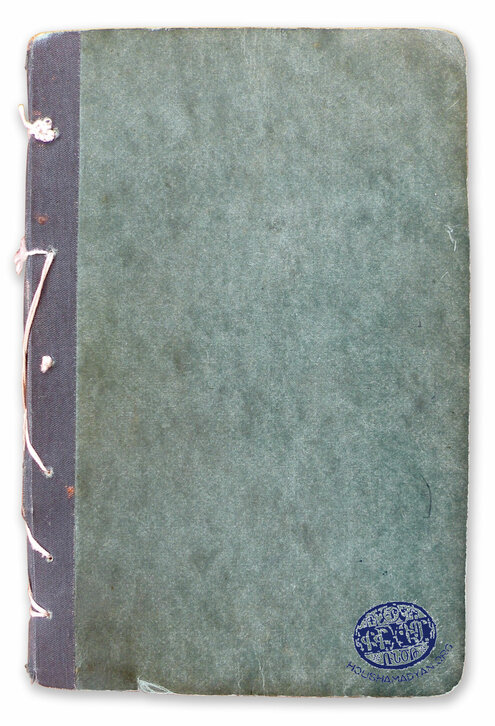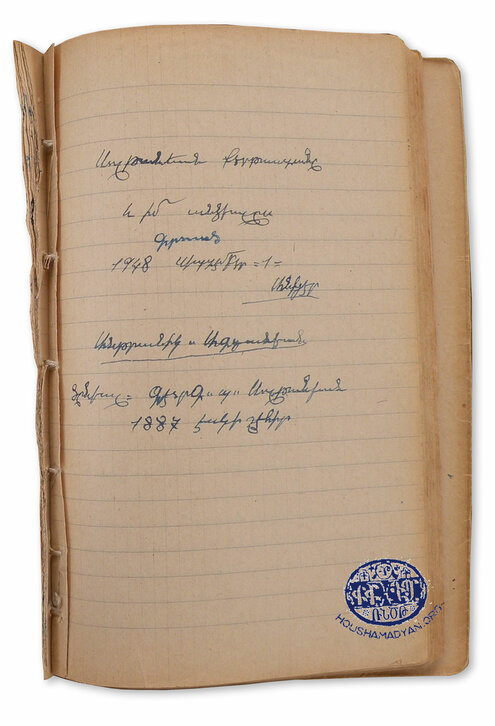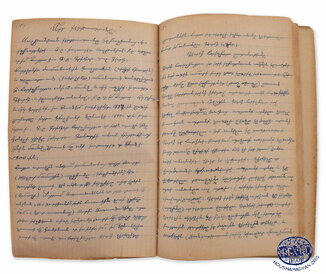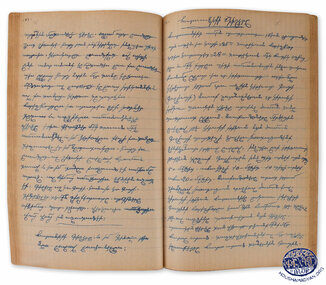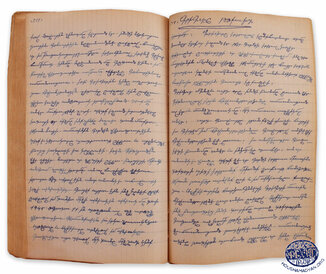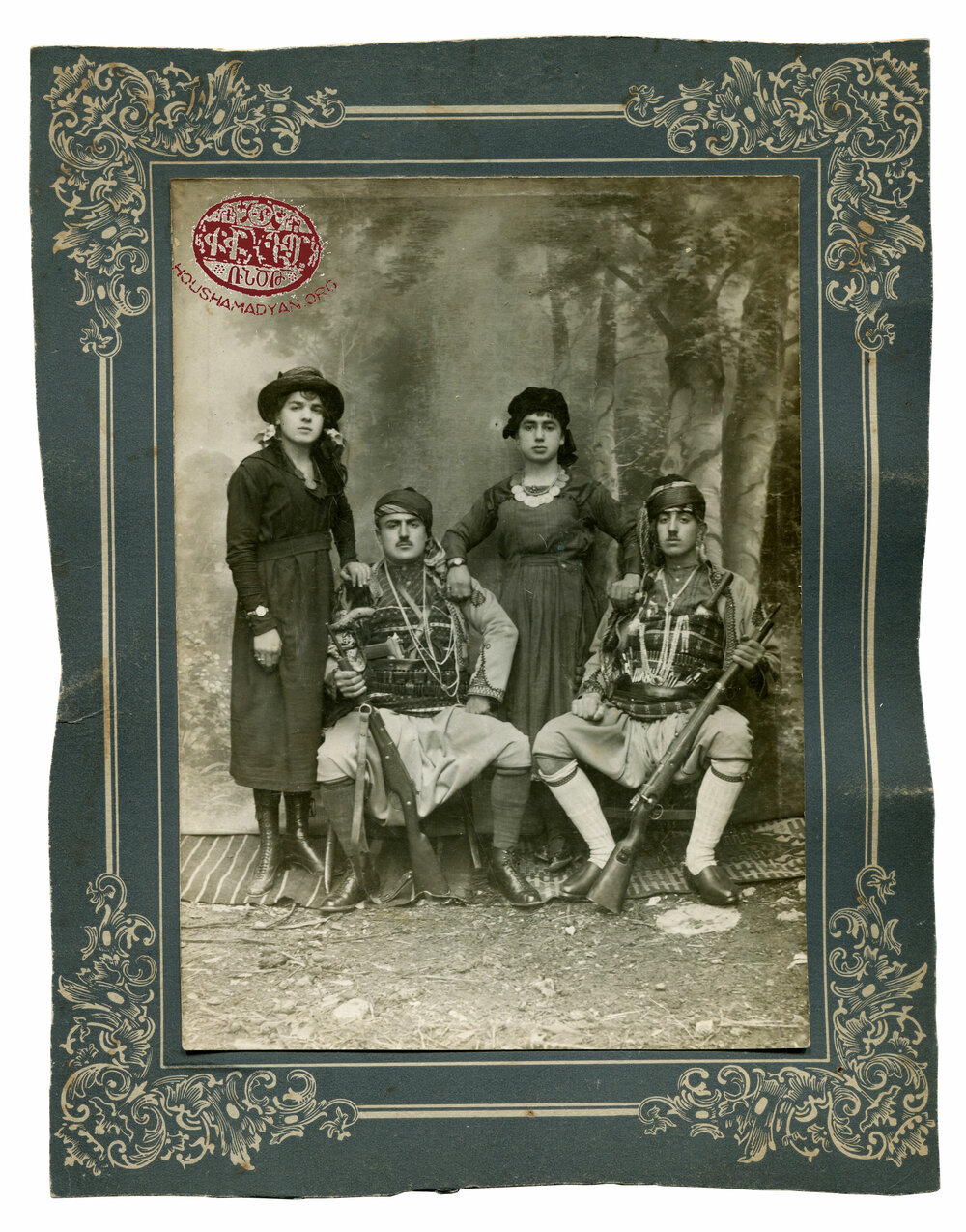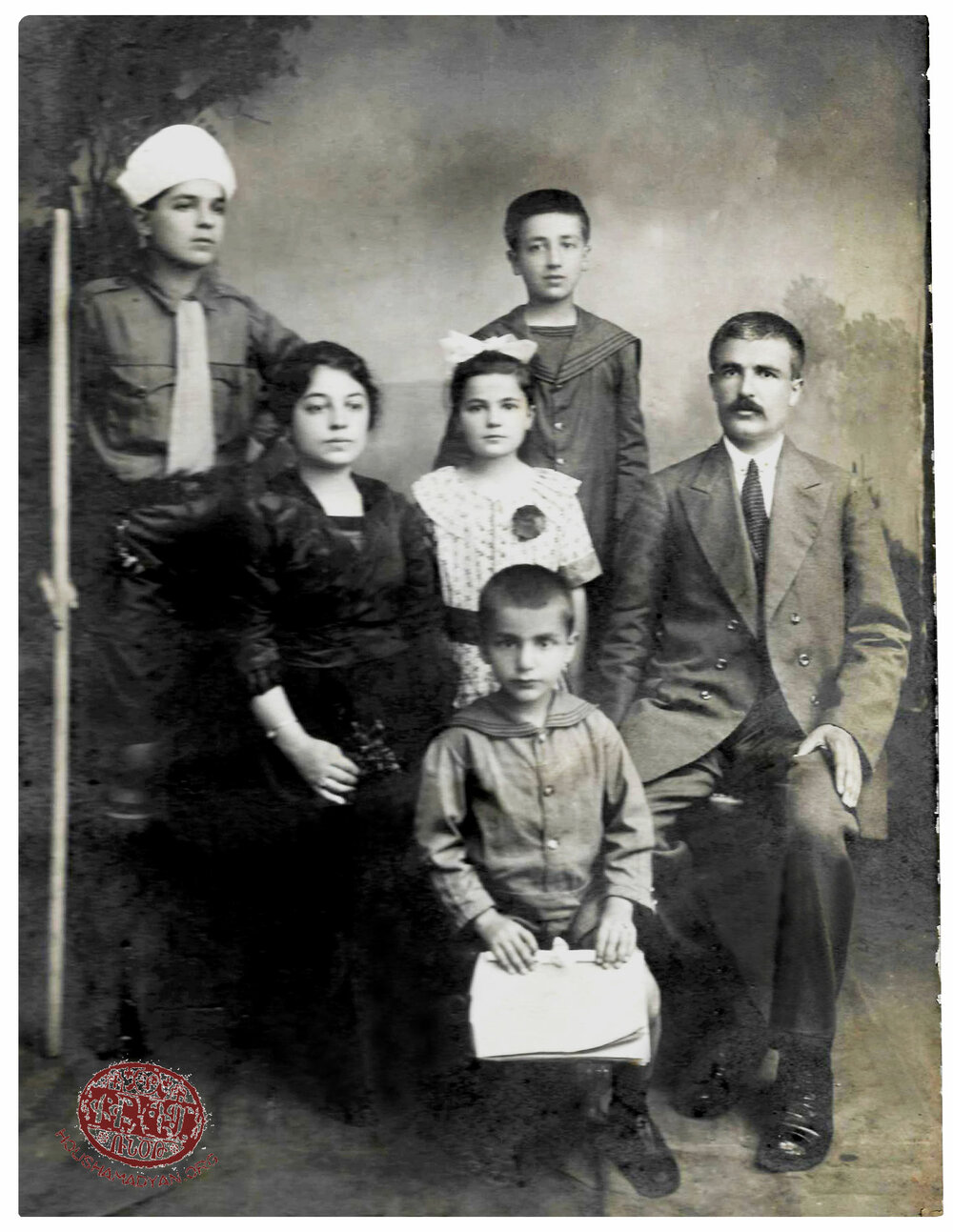Marie Boyadjian collection - Paris, France
Marie Boyadjian put the materials presented in this section at our disposal. The Houshamadyan team met Marie in March 2016 during a Houshamadyan event organized on the Péniche Anako in Paris. Marie’s grandfather and grandmother are from Eskishehir/Eskişehir and Kütahya respectively, which are two neighboring cities in the province of Bursa/Hüdavendigar. The paternal side of the family was Sultanian by surname whereas the maternal side of the family was Der Ghazarian. Mary’s mother was Nvart Der Ghazarian (later Sultanian-Boyadjian), who was the daughter of Mihran Kyulahian and Marik Kyulahian (born Der Ghazarian). We also know Marik’s father’s name - Stepan Der Ghazarian. Marie’s father’s name was Garabed Sultanian, who upon arriving to France changed his surname from Sultanian to Boyadjian.
Der Bedros priest’s family, Kütahya. Back row, standing from left to right are: Zarouhi, Karnig and Hagop. In the middle, seated from left to right are: Marten (born Ounanian, she is the priest’s wife), the priest Bedros Bedrossian (secular name: Garabed Kyulahian) and Hadji Eva (most probably the mother of the priest’s wife). Front row, from left to right are: Kayane, Rapig and Mgrdich. The photograph was taken by the Armenian photographer of the city, Sdepan Yeramian, in Kütahya at Father Bedros’s house.
1) Kütahya, Father Bedros Bedrossian’s sons - Karnig and Hagop.
2) Kevork Sultanian, wearing the Ottoman army’s uniform. Kevork is the cousin of Nvart’s husband Garabed, who was born in Eskishehir/Eskişehir in 1887. His father’s name was Boghos. Kevork is the author of the memoir (unpublished), which was written in France in 1948, since later in life, Kevork settled in France.
The author of this memoir, Kevork Sultanian (on the right) with his paternal uncle’s son, Garabed Sultanian. They are photographed in Istanbul around 1912-1913. During this period Kevork served in the Ottoman army. In his memoir, he recalls the time when this photo was taken; it was when he was serving somewhere around Edirne and had taken a few days off to meet his cousin Garabed, who had come from Eskishehir/Eskişehir to Istanbul for business.
The unpublished memoir of Kevork Sultanian. This is his handwritten copybook.
In some 225 pages, the author talks about his life and that of his family in Eskishehir/Eskişehir. He was orphaned at a young age and was left in the care of his paternal uncle. After briefly attending the city’s Armenian school, at the age of 14, he stopped attending school and started working for some Armenian businessmen in the city. He got enlisted in the Ottoman army, became a corporal and participated in the Balkan war. Like all Armenians in Eskishehir/Eskişehir, Kevork and the families of both his paternal uncles were exiled. They were destined to go to Deir Zor, but once in Aleppo, they managed to stay there thanks to a bribe and later settled in a nearby village and worked in agriculture. Some members of the family passed away, but Kevork survived.
After the ceasefire, we find Kevork in Adana, and later in Eskishehir/Eskişehir, then, again in Adana, where he stayed till 1921. In Adana, in July of 1920, he married Mayram Kouyoumdjian from Sis. After the second exile of the Armenians of Cilicia, Kevork, his wife and their first child, Krikor (born in Adana in 1921), first settled in Iskenderun (Alexandrette) in an immigrant camp, and later passed to Beirut, where they also lived under a tent, in the big Armenian immigrants’ camp situated near Beirut’s port.
In 1923, Kevork and Mayram’s daughter, Koharig, was born; and in 1926, Boghos, their second son. In 1926, the family immigrated to France, where Kevork worked in different factories… In 1927, their third son, Alpiar, was born. At the start of WWII, Kevork and his family were settled in Paris where living conditions were very difficult. Under these circumstances, Kevork and his son Krikor went to Germany, where they worked as laborers in an aircraft-manufacturing factory in Oschersleben (west of Berlin). During the last years of the war, the Nazi regime made Kevork work in the forced labor (Zwangsarbeiter) detachment. Kevork survived once more and returned to Paris at the end of the war. He died in the 1980’s.
Such is the incredible story of a simple man…
